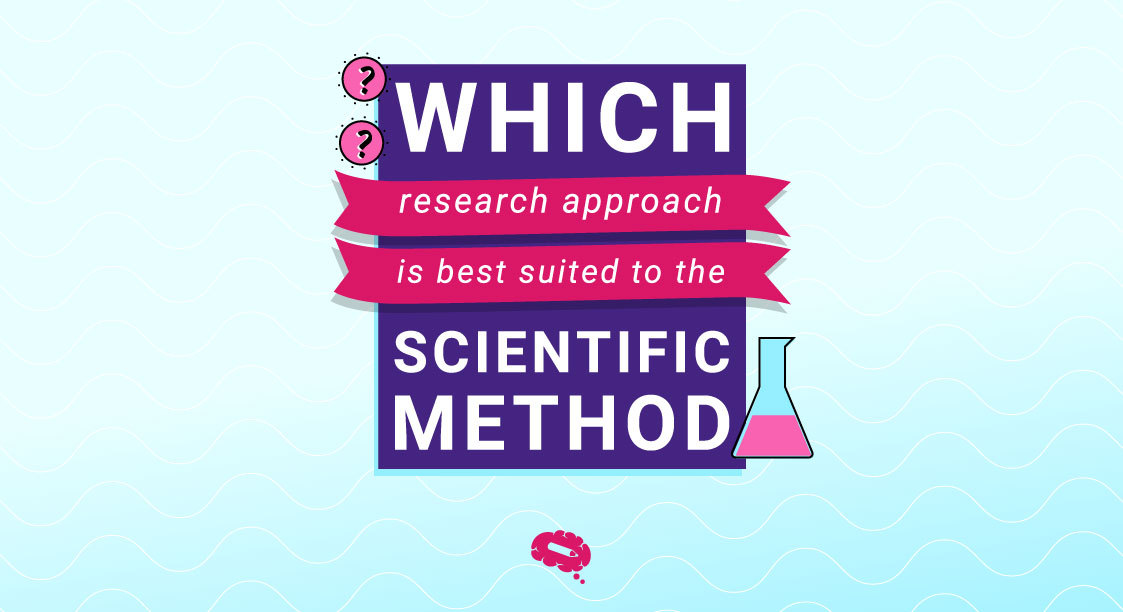The scientific method serves as the cornerstone of empirical inquiry, enabling researchers to systematically investigate the natural world and advance knowledge. In the context of scientific inquiry, choosing the most suitable research approach is vital for conducting rigorous and meaningful investigations.
This article aims to address the question of which research approach aligns best with the scientific method. It delves into the exploration of various types of research approaches, their respective advantages and disadvantages, and provides considerations to make an informed choice. By examining these factors, researchers can gain insights into selecting the most appropriate research approach that aligns with the principles and objectives of the scientific method.
Introduction to the Scientific Method
The scientific method serves as the foundation for empirical inquiry, providing a systematic approach to investigate and understand the natural world. It is a structured process that scientists employ to acquire knowledge, test hypotheses, and draw reliable conclusions.
At its core, the scientific method involves a series of logical steps that guide researchers in their quest for understanding. It begins with observation, where scientists carefully observe and identify patterns or phenomena of interest. These observations lead to the formulation of research questions or hypotheses, which are educated guesses about the relationships or explanations underlying the observed phenomena.
To test these hypotheses, researchers design and conduct experiments or studies, collecting data through systematic observations or measurements. The data collected is then analyzed using statistical or other appropriate methods to draw meaningful insights and conclusions. This process of analysis involves the identification of patterns, trends, or correlations within the data.
One critical aspect of the scientific method is the emphasis on objectivity and replicability. Findings and conclusions derived from scientific investigations must be based on evidence and be reproducible by other researchers following the same methodology. This ensures that scientific knowledge is reliable, verifiable, and can withstand scrutiny and peer review.
The scientific method is iterative in nature, with new observations and findings often leading to the formulation of new hypotheses or the refinement of existing ones. This iterative process contributes to the advancement of scientific knowledge over time, as researchers build upon previous work and expand the understanding of the subject matter.
By adhering to the principles of the scientific method, researchers can navigate through the complexities of the natural world, generate new insights, and contribute to the collective knowledge in their respective fields. It is a systematic and rigorous approach that forms the backbone of scientific inquiry, enabling researchers to uncover truths, challenge assumptions, and make meaningful contributions to their disciplines.
Types of Research Approaches
By gaining a thorough understanding of the various research approaches and their unique characteristics, researchers are empowered to make informed decisions regarding the most suitable approach for their specific research questions and objectives.
It is crucial to align the chosen approach with the nature of the research topic, the availability of resources, and the necessity to capture both objective and subjective aspects of the phenomenon being investigated.
Furthermore, researchers should consider the adoption of a mixed research approach, which combines quantitative and qualitative methods, to attain a more comprehensive understanding of complex research questions.
Here are the common types of research approaches, namely quantitative research, qualitative research, and mixed research.
Quantitative Research
Quantitative research involves the systematic collection and analysis of numerical data to establish relationships, test hypotheses, and make generalizations about a larger population. This approach relies on structured data collection methods, such as surveys, experiments, or the analysis of existing datasets.
Quantitative research aims to quantify variables, measure outcomes objectively, and often employs statistical techniques to analyze and interpret the data. By employing large sample sizes and statistical analysis, quantitative research strives for objectivity and generalizability of findings.
Qualitative Research
Qualitative research focuses on understanding complex phenomena and exploring subjective experiences, meanings, and contexts. This approach emphasizes in-depth exploration and interpretation of non-numerical data, such as interviews, observations, or textual analysis.
Qualitative research aims to capture rich and detailed insights, uncover underlying motivations, and generate theories grounded in real-life experiences. Researchers often employ techniques like thematic analysis or grounded theory to analyze qualitative data. Through open-ended questions and a flexible research design, qualitative research allows for a deep understanding of the complexities and nuances of a research topic.
Mixed Research
Mixed methods research integrating quantitative and qualitative approaches, recognizing the value of both types of data in providing a comprehensive understanding of a research topic. Researchers using this approach collect and analyze both numerical and non-numerical data, allowing for triangulation of findings and a more holistic perspective.
Mixed methods research enables researchers to explore complex research questions by combining the strengths of quantitative analysis (e.g., statistical significance) with the richness of qualitative insights (e.g., in-depth understanding of motivations). By utilizing multiple sources of data, researchers can gain a more comprehensive understanding and make informed interpretations.
Advantages and Disadvantages of Different Research Approaches
This section provides a comprehensive exploration of the advantages and disadvantages associated with different research approaches, including quantitative research, qualitative research, and mixed research. By examining these approaches, researchers can gain a deeper understanding of their advantages and disadvantages, allowing them to make informed decisions when selecting the most appropriate approach for their specific research objectives.
Quantitative Research Advantages and Disadvantages
Advantages:
- Allows for precise measurement and statistical analysis of data, providing objective and reliable results.
- Enables generalization of findings to larger populations, enhancing the external validity of the study.
- Offers a structured and systematic approach to research, ensuring rigorous data collection and analysis.
- Facilitates replication and verification of results, contributing to the robustness of scientific knowledge.
- Provides opportunities for hypothesis testing and establishing cause-and-effect relationships.
Disadvantages
- May oversimplify complex phenomena and overlook contextual factors that influence the research topic.
- May not capture the richness and depth of subjective experiences and perspectives.
- Can be constrained by the availability and suitability of numerical data.
- Requires careful consideration of sample size and potential biases to ensure valid and meaningful results.
- Relies on predefined variables, limiting the exploration of unexpected insights.
Qualitative Research Advantages and Disadvantages
Advantages:
- Provides in-depth understanding of complex phenomena, capturing rich and nuanced insights.
- Allows for exploration of subjective experiences, meanings, and contexts.
- Offers flexibility in data collection methods, allowing researchers to adapt to emerging insights.
- Facilitates theory development and generates hypotheses for future research.
- Supports the exploration of sensitive or difficult-to-measure topics.
Disadvantages
- Findings may be subjective and influenced by researchers’ interpretations and biases.
- Limited generalizability due to small sample sizes and contextual specificity.
- Time-consuming data collection and analysis processes, requiring significant resources.
- Vulnerable to potential biases and subjectivity in data collection and interpretation.
- Lack of standardized procedures may affect the reproducibility of results.
Mixed Research Advantages and Disadvantages
Advantages:
- Provides a comprehensive and holistic understanding of research questions by integrating quantitative and qualitative approaches.
- Enables triangulation of data sources, enhancing the validity and reliability of findings.
- Allows for the exploration of complex phenomena from multiple perspectives.
- Supports flexibility in research design and data collection methods.
- Can uncover unexpected findings and bridge gaps in understanding.
Disadvantages
- Requires expertise in both quantitative and qualitative methods, necessitating multidisciplinary collaboration.
- Time and resource-intensive, demanding careful planning and coordination.
- Challenges in integrating and synthesizing data from different sources.
- Complexity in analyzing and interpreting mixed data, requiring specialized skills.
- Requires thoughtful consideration of research design to ensure coherence and effectiveness.
Which Research Approach Is Best Suited to the Scientific Method?
Choosing the most suitable research approach in accordance with the scientific method necessitates thoughtful deliberation of several factors. When making this decision, researchers must take into account a range of factors and address the question, “Which research approach is best suited to the scientific method?” When selecting a research approach. Here are some key considerations when selecting a research approach:
Considerations for Choosing a Research Approach
- Research Objectives: Clarify the specific goals and objectives of your study. Are you seeking to quantify variables and establish relationships (quantitative research), or are you aiming to explore subjective experiences and meanings (qualitative research)? Clearly defining your research objectives will guide your choice of approach.
- Research Questions: Examine the nature of your research questions. Do they require numerical data and statistical analysis (quantitative research), or do they necessitate in-depth exploration and understanding of complex phenomena (qualitative research)? Aligning your research questions with an appropriate approach is crucial for generating relevant and meaningful findings.
- Available Resources: Consider the resources at your disposal, including time, budget, and expertise. Some research approaches may require specialized skills, equipment, or extensive data collection and analysis processes. Assessing the feasibility of different approaches within your available resources is essential.
- Nature of the Phenomena: Reflect on the nature of the phenomena you are studying. Some phenomena lend themselves better to quantitative measurement and analysis, while others require a qualitative lens to capture nuanced details and contextual factors. Understanding the characteristics of your research topic will guide your choice of approach.
- Ethical Considerations: Take into account ethical considerations associated with your research. Certain approaches may be more suitable for addressing sensitive or personal topics, while others may raise concerns regarding participant confidentiality or informed consent. Ensure that your chosen approach aligns with ethical guidelines and principles.
- Existing Knowledge and Theoretical Frameworks: Consider the existing knowledge and theoretical frameworks relevant to your research topic. Are there established theories or models that align with your research objectives? Exploring the existing body of literature can help you identify the most appropriate research approach that builds upon prior knowledge.
- Research Design and Methodological Fit: Evaluate the compatibility between your research design and the chosen approach. Ensure that the selected approach aligns with the overall design of your study, including data collection methods, analysis techniques, and the intended audience of your research findings.
Conclusion
In summary, selecting the most suitable research approach that aligns with the scientific method requires careful consideration of various factors. Researchers must address the question, “Which research approach is best suited to the scientific method?” and give due consideration to factors such as research objectives, research questions, available resources, the nature of the phenomena being studied, ethical considerations, existing knowledge and theoretical frameworks, as well as the overall compatibility with the research design.
Quantitative research offers precise measurement, statistical analysis, and the ability to generalize findings, but may oversimplify complex phenomena and overlook subjective experiences. Qualitative research provides in-depth understanding, flexibility in data collection methods, and the exploration of subjective meanings, but findings may be subjective and lack generalizability. Mixed research integrates quantitative and qualitative approaches, allowing for a comprehensive understanding and triangulation of findings, but requires expertise and careful coordination.
Ultimately, researchers must carefully weigh the advantages and disadvantages of each approach to ensure the chosen approach aligns with the goals of their study. By adhering to the principles of the scientific method and selecting an appropriate research approach, researchers can conduct rigorous investigations, generate meaningful insights, and contribute to the advancement of knowledge in their respective fields.
Create A Perfect-Matching Scientific Figure For Your Paper With Mind The Graph
Mind the Graph is a versatile platform that offers invaluable assistance to scientists in visualizing their research. Mind the Graph empowers researchers to effectively communicate complex scientific concepts and create visually appealing and accurate scientific figures for their research, enhancing the presentation and dissemination of scientific findings, allowing researchers to create perfect-matching figures that effectively convey their research insights to the scientific community and beyond.

Subscribe to our newsletter
Exclusive high quality content about effective visual
communication in science.






